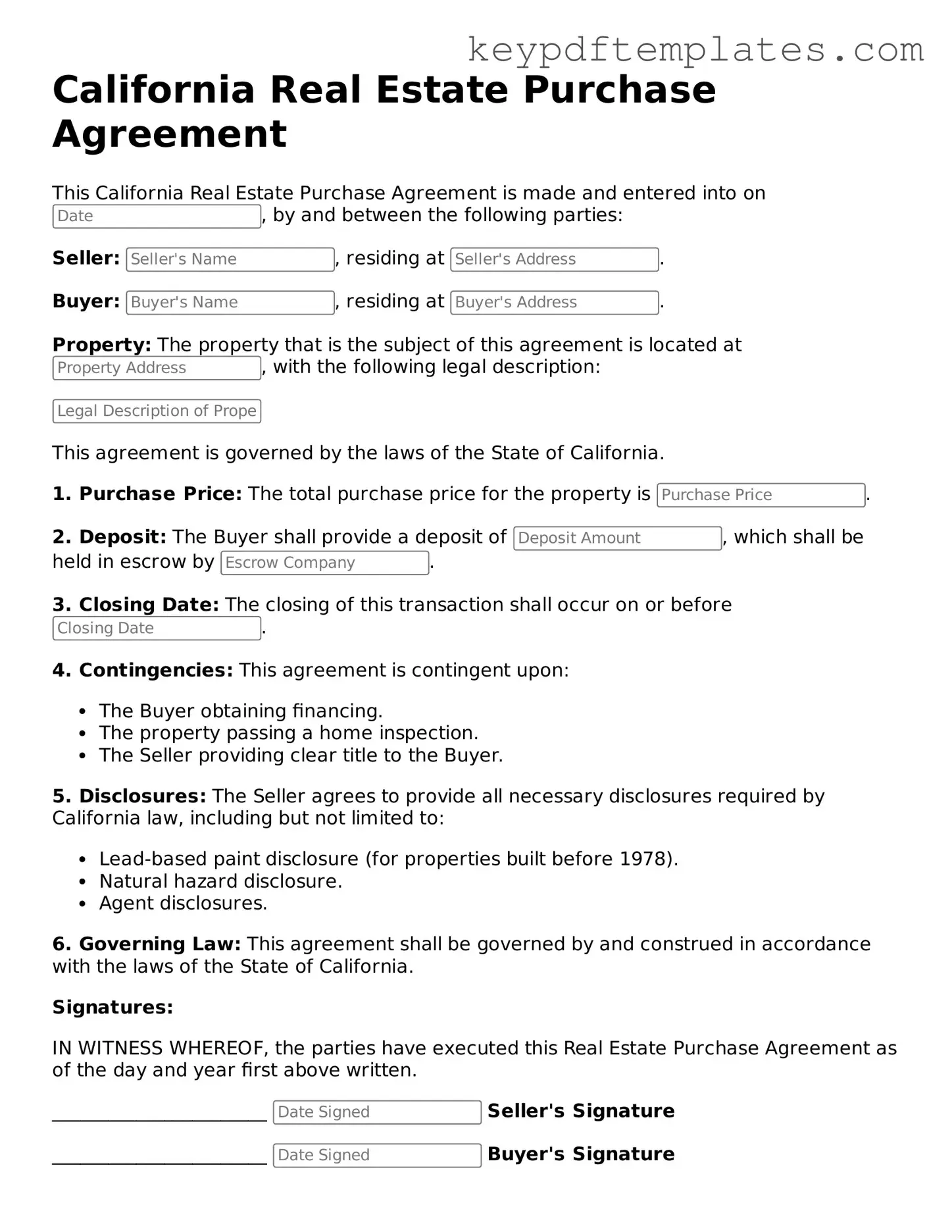Legal Real Estate Purchase Agreement Document for the State of California
The California Real Estate Purchase Agreement form is a legal document used to outline the terms and conditions of a real estate transaction between a buyer and a seller. This agreement serves as a binding contract that details the obligations of both parties involved in the sale. Understanding this form is essential for anyone looking to navigate the California real estate market effectively.
Modify Document Online
